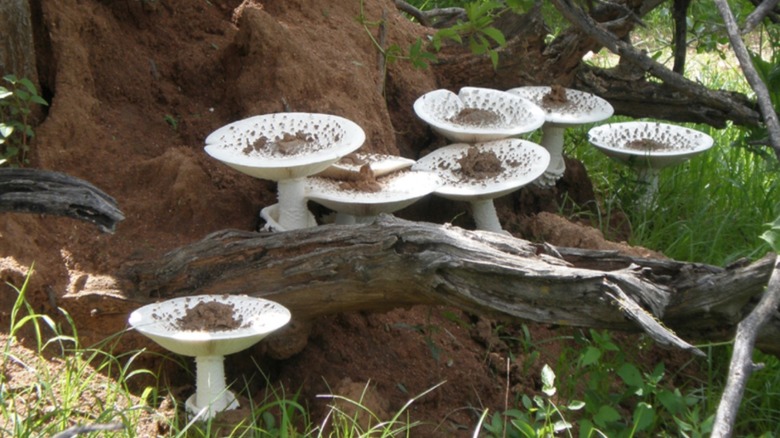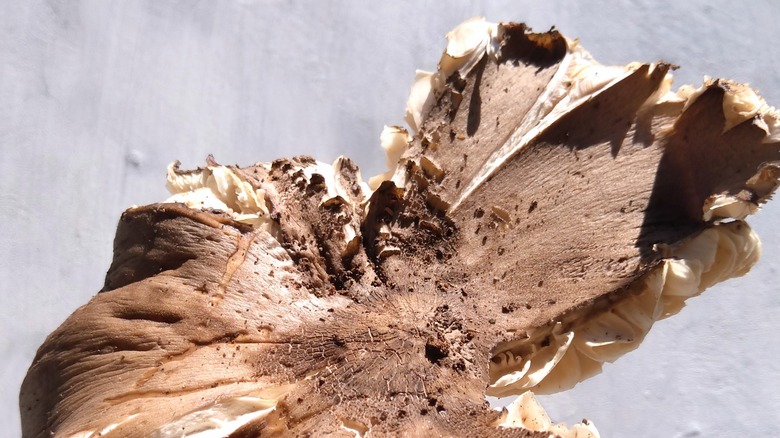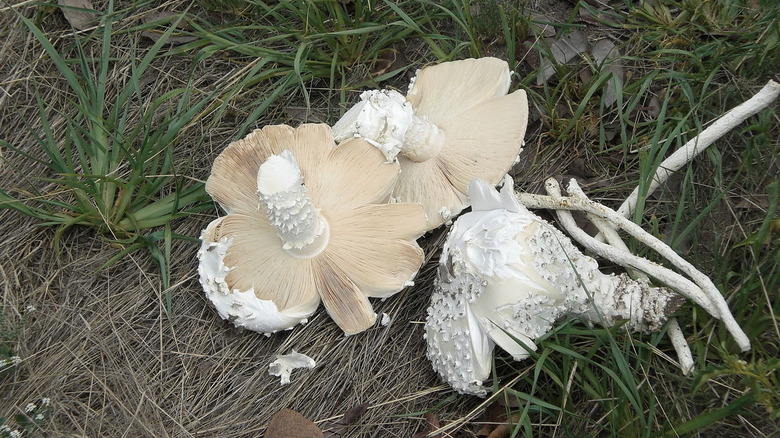Omajowa Is A Savory African Mushroom Born On Termite Hills
From tiny enokis to meaty portobellos, mushrooms come in a range of shapes and sizes. The protein-rich fungi are an excellent source of nutrition that can be foraged—no surprise they're consumed in many cuisines worldwide.
In Namibia, an especially large species (Termitomyces schimperi) — commonly known as omajowa — are sourced from termite mounds. These enormous white mushrooms reach two pounds in weight, with both a sizeable stem and cap. Omajowa's flavor is extraordinarily meaty, an attribute that's made them a delicacy. They're often sliced into large slices, which are well-predisposed to frying and sauteing.
While in season, the gigantic fungi are sold from roadside stalls and gathered by hand. Integrated into a plethora of dishes, they can be substituted for meat and turned into the centerpiece of meals. Their outsized appearance, paired with a satiating density, evince why they garner so much attention. Let's dive into what these distinct mushrooms are all about.
What are omajowa mushrooms?
Omajowa mushrooms are a seasonal occurrence, appearing during the rainy season — January through March. The mushrooms only emerge in specific conditions; abundant precipitation combined with an ecosystem where termite mounds occur. As a result, the fungi are only known to grow in northern and central parts of Namibia.
Locals observe termite nests during the season, noting cracks that signal the mushroom's growth. Once they first sprout, omajowas are quickly foraged before other animals consume them. And their large size is an attribute shared among other termite-nest-growing fungi, too. Termitomyces Titanicus — of the same genus but found in — reach 3 feet in diameter, making them the world's largest edible mushroom.
Omajowa's unique qualities make them highly regarded, not just in culinary applications. The unique fungi are seen as a symbol of growth and fertility and are esteemed across multiple cultures in Namibia. Here's how they come together in the kitchen.
How to cook with omajowa mushrooms
The massive mushrooms do especially well when cooked over direct heat — making them popular for sautéing and grilling. In their simplest preparation, they're salted and fried in a pan with butter. A popular filling for omelets, they're complemented by other savory vegetables like asparagus and garlic, or tangier notes such as tomatoes.
For a standalone dish, they're chopped and added to a hot pan with softened onions and garlic. Once browned, crisped cashews are mixed in, and the result's seasoned with salt and pepper. It's served alongside a carb, like Oshithima — a porridge made from pearl millet flour.
Due to their starchier consistency, the stems of the mushrooms are often prepared separately and added to slow-cooking preparations like stews and rice dishes. Meanwhile, the juicy head of the mushroom is treated like a steak, fried in thick cuts. Its savory, meat-like consistency even makes it a popular replacement for beef. Omajowa mushrooms are unique in their satiating qualities — there's nothing quite like them. So if you're in Namibia during their season, seek out a bite.


